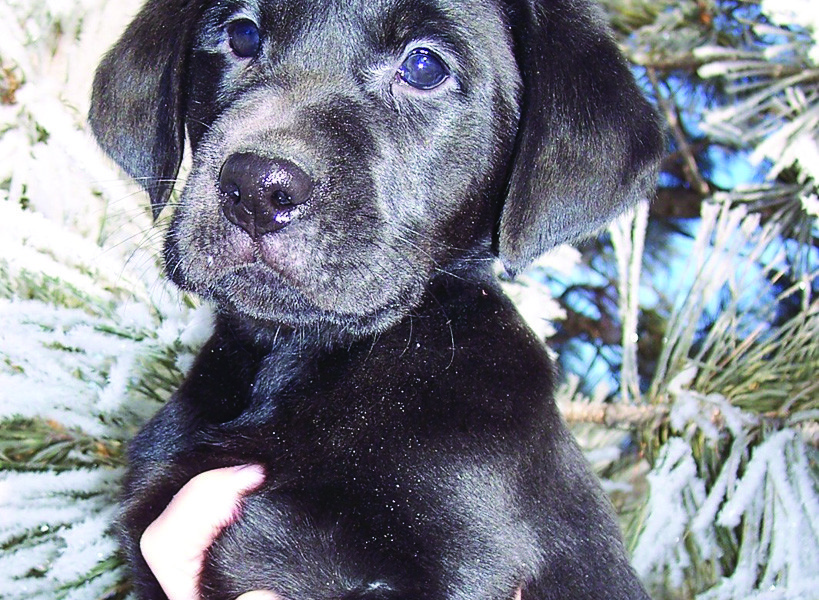Do some homework on genetics and follow a few basic guidelines and you’ll get a keeper.
You probably all remember the line, “How much is that doggie in the window, the one with the waggly tail,” from your childhood days.
When it comes to choosing a future hunting companion, basing the selection of a puppy on its price and cuteness probably is the most ineffectual test the new dog owner can use.
The worst thing you can do is pick a pup because he’s cute. Experience shows that cute little pups can grow up into a big-time problem.
And the original cost, which is the least part of an overall investment over the lifetime of the dog, should be the least criteria.
Before looking at a puppy, an owner should have a basic knowledge of genetics by being familiar with pedigrees and making sure the breeder has sound stock.
You must further assume that the dogs having the pups have good temperament and are neither listless nor hyperactive. This may sound oversimplified, but these are two very big assumptions. There are a lot of breeder problems out there.
Once an owner has dealt with these important issues, the task of actually picking a puppy can begin. Owners should decide what kind of dog they want before the process starts.
The test
Animal behavioralists have identified criteria for determining the pecking order of a litter during an age period of 5 to 7 weeks. It’s called the Campbell Puppy Behavior Test.
The test is fairly simple and requires four different procedures. Here’s an oversimplification:
- First, take the puppy away from its comfort zone, probably its welping box, and love it up a bit. After putting the puppy down, see if it will come when it is called. It’s a good sign if the puppy comes. If it takes off, it shows that it is independent, if it hits the ground and clams up, it might tell you it’s a wallflower.
- Second, take the puppy on a short walk. A puppy that tags along and nips at your pant legs shows its boldness. The other extreme is one that hesitates, with its tail between its legs.
- Third is the restraining procedure. Turn the puppy on its back. If it fights and struggles, it usually is an indication it’s a go-getter. If it gives up, it shows it respects you as the boss.
- Fourth, lift the pup off the ground 3 to 4 inches. An aggressive dog will fight you, while a passive one will let you handle it. What we are trying to do is eliminate the knothead, the one who thinks he’s the boss, or the shy one, that one that gives up.
- A tough handler might want to pick a rowdy pup. But, if you’re more lackadaisical or easygoing, you might want the mellow one.
But to do a proper job, it takes more than looking at a litter of puppies once and making a selection. The test works, but it has its limitations. First of all, it’s got to be run at different times of the day and at different ages during that 5-to 7-week-old growth period. This can be difficult because you and the breeder have a large time commitment.
Which sex?
On the subject of male vs. female, there are advantages and disadvantages to both. I get a lot of phone calls about the pros and cons of males and females.
Males are usually bigger and stronger and, in general, better looking. Physically, they’re more stout and blockier. The isadvantages include the urge to roam and the tendency to fight. Also, from a maintenance standpoint, urinating males can be hard on shrubbery.
Females generally are more one-on-one orientated. In general, they’re probably a little easier to train. One disadvantage of females is that they go into heat twice a year, which can mean up to 20 days of down time during each heat cycle, if the hunter is with friends who have male dogs. Like males, females also present maintenance problems. They can do quite a bit of damage to a lawn.
Generally, there’s not a great difference between the two. It’s one of personal preference. My advice to those who’ve done their homework from standpoint of pedigrees, titles, guarantees, etc. Close your eyes and pick one, they’re like bookends.
Checklist from picking a pup
- Do the teeth have a matching bite and are they white without any brown stains? Staining indicates the pup has been given poor quality food.
- Is the coat clear and glossy?
- Is the belly button or navel OK? If it’s popped out, the puppy probably has a hernia.
- Are the eyelids tight to the eyeball, not open or rolled inward?
- Has the breeder been giving the pups shots?
- Have the dew claws been removed?
- Can the breeder give hip or eye guarantees?
- Are the breeder’s facilities clean and presentable?
- Has the breeder socialized the pups over the last month?
- Are the pups retrieving already?
